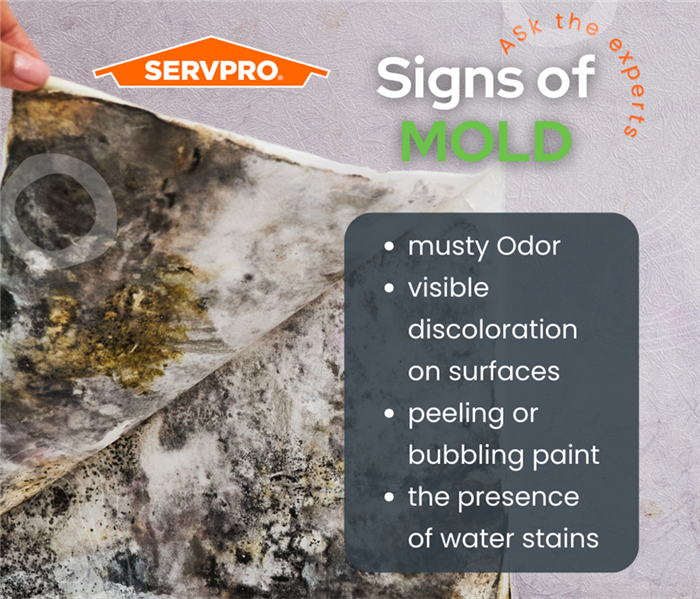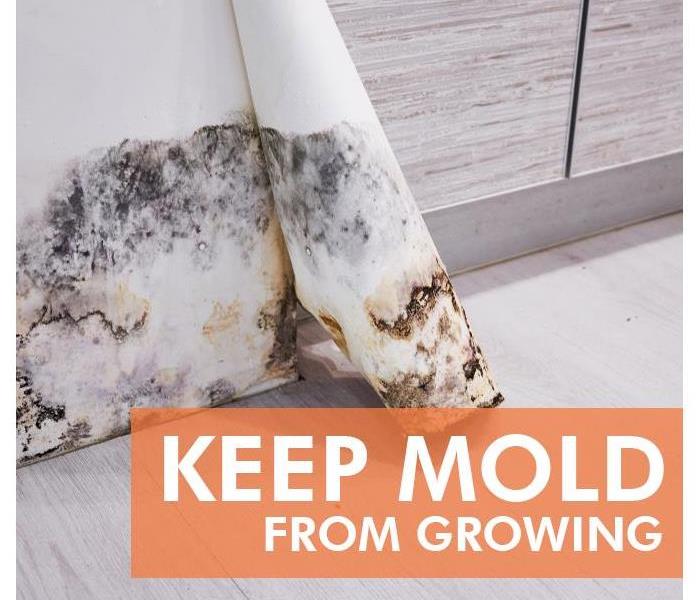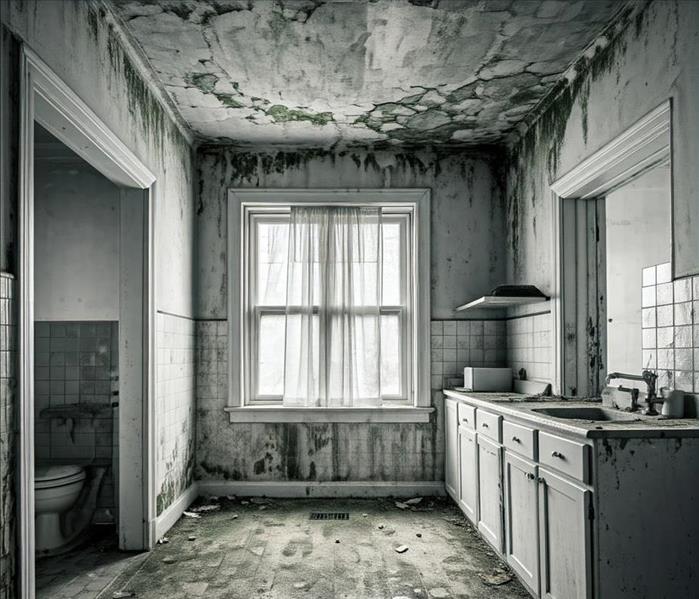How Mold Can Grow from Water Damage and How You Need to Get Tested for Removal
1/20/2025 (Permalink)
Mold is a type of fungus that can grow in damp conditions. It can be a serious problem in homes that have been damaged by water, such as from flooding, leaky pipes, or sewage backups.
Mold can grow on a variety of surfaces, including walls, ceilings, floors, and furniture. It can also grow in hidden places, such as behind walls and under floors.
If you suspect mold in your home, it is important to have it tested by a professional. Mold testing can help to determine the type of mold present and the extent of the problem.
Once you know you have mold, it is important to have it removed by a professional. Mold removal can be dangerous, and it is important to have it done by someone who knows what they are doing.
Here are some tips for preventing mold growth in your home:
- Clean up spills and leaks promptly.
- Fix any plumbing problems promptly.
- Use a dehumidifier to remove excess moisture from the air.
- Improve ventilation in your home.
- Keep your home clean and dry.
If you have any questions about mold or mold removal, please contact SERVPRO. We are experts in mold remediation and can help you get your home back to normal.
Additional tips for preventing mold growth:
- Inspect your home regularly for signs of mold.
- Keep your gutters and downspouts clean.
- Trim trees and shrubs away from your home.
- Use a dehumidifier in your basement.
- Install a sump pump in your basement.
By following these tips, you can help prevent mold growth in your home and keep your family safe and healthy.
Signs of Mold
2/8/2024 (Permalink)
 Here are a few signs that you might have mold growth.
Here are a few signs that you might have mold growth.
Are you at risk of mold resulting from recent water damage?
When water damage occurs, it is crucial to address the issue promptly. Water damage can lead to the growth and spread of mold in various areas of a building. Mold thrives in moist environments and can quickly develop after a water leak or flood. It can be found on walls, ceilings, floors, and even in hidden places such as behind wallpaper or inside insulation.
Here are a few of the signs that indicate the presence of mold resulting from water damage: a musty odor, visible discoloration on surfaces, peeling or bubbling paint, and the presence of water stains. If you notice any of these signs, it is essential to take immediate action to identify and address the source of the water damage and remove the mold.
Identifying Mold
12/5/2022 (Permalink)
 If you need mold remediation call SERVPRO of Lake Mary/ Heathrow.
If you need mold remediation call SERVPRO of Lake Mary/ Heathrow.
Identifying Mold
If you see mold or mildew in your Lake Mary, FL home, it's important that you identify it correctly. Mold can look very similar to mildew and the two types of fungus may be difficult to tell apart. But knowing what each looks like will help you decide whether or not you need to call in a professional remediation team.
Appearance of Mold
Mold can be white, black, green, yellow or any other color. It also comes in powdery and slimy forms. However, mold is typically a white or gray color, and it can be found in the same places as mildew. However, there are some key differences between these two organisms. The main difference is that mildew is usually powdery and can be found in whites, blues, grays, or greens. People who are allergic to mold may also experience an allergic reaction from mildew spores.
Mildew has many different names because of its appearance and ability to grow on different types of materials; "sugar fungus" is one common name for this organism because it grows on sugary substances such as bread or fruit juice.
Signs of Mold vs. Mildew
This is one way to tell them apart. Mold stains are usually black or brown, while mildew stains are usually white or gray. If you're not sure what kind of stain your house has, take out some colored permanent markers and test them on an inconspicuous place (not the ceiling). If it's mold, the color will turn dark almost immediately; if it's mildew, it will remain light after several minutes.
The problem with this method is that sometimes mold won't leave any noticeable stains; in those cases, we look for other signs.
Where Mold Grows
Mold may be present in and on walls, soft surface items like couches or mattresses, hard surfaces like wood or tile, and outside of the home on vinyl siding or window frames. It can also grow on hard surfaces like wood or tile. Mold can even be present outside of your Lake Mary, FL home on items such as vinyl siding or window frames that aren’t properly maintained.
Drying out a room after mildew growth to prevent further growth should be relatively easy. However, mold growth needs to be professionally cleaned up based on the type of mold and the material affected by it. Mold grows in many different places, making it difficult to identify. Mold can be visible or hidden, and its growth needs to be professionally cleaned up based on the type of mold and material affected by it.
Call the Professionals
If you suspect a mold problem, the first step is to determine what type of fungus you have. Fungi can be identified by sight and smell. For example, if you see discoloration on a surface or smell an earthy odor in your home, chances are that there's some kind of fungus growing there. But what kind?
However, it's important to note that mold and mildew aren't the same things: while both cause similar symptoms (such as black spots), they're caused by different types of fungi. Knowing which kind is growing in your home will help you figure out how serious the issue may be and whether or not it requires professional remediation services from a licensed company like us at All Pro Restoration Services!
If you have mold in your Lake Mary, FL home and need help identifying it, SERVPRO of Lake Mary/Heathrow our team is here to help.






 24/7 Emergency Service
24/7 Emergency Service


